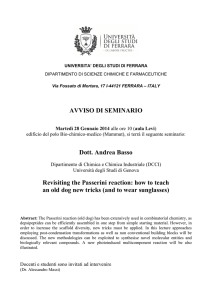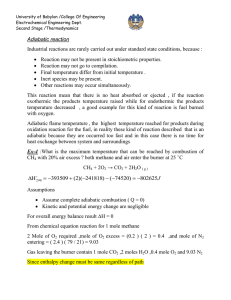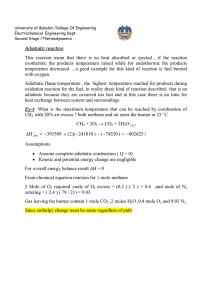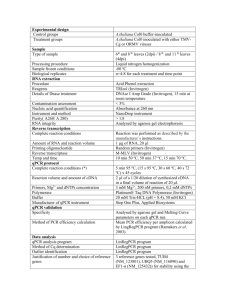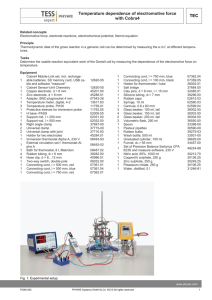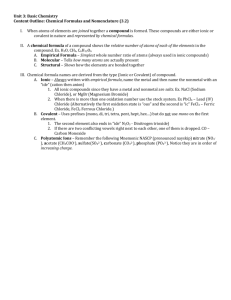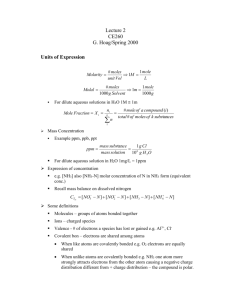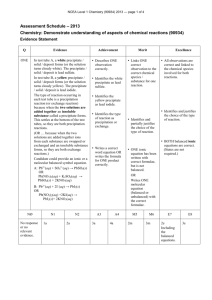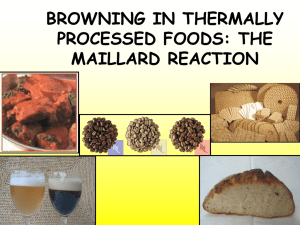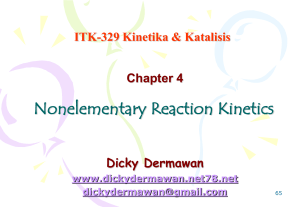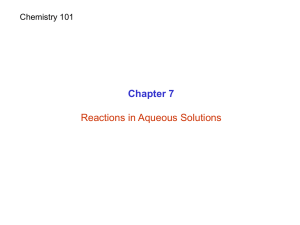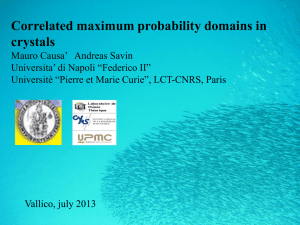a Printable Version - Lecture Demonstrations
advertisement
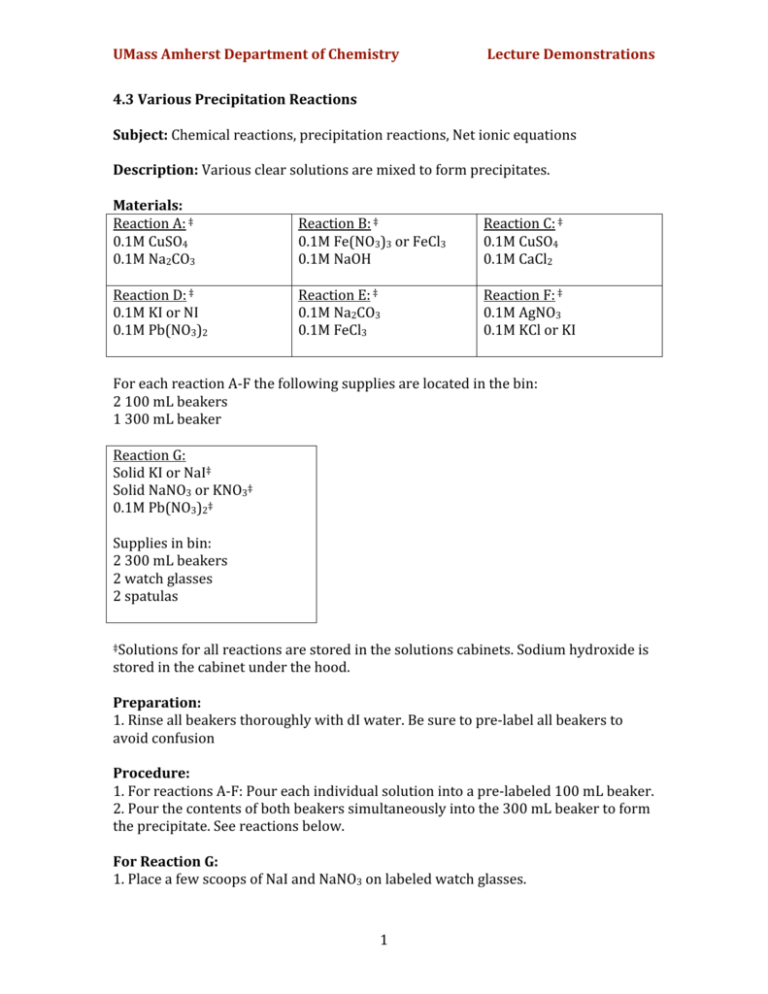
UMass Amherst Department of Chemistry Lecture Demonstrations 4.3 Various Precipitation Reactions Subject: Chemical reactions, precipitation reactions, Net ionic equations Description: Various clear solutions are mixed to form precipitates. Materials: Reaction A: ‡ Reaction B: ‡ Reaction C: ‡ 0.1M CuSO4 0.1M Fe(NO3)3 or FeCl3 0.1M CuSO4 0.1M Na2CO3 0.1M NaOH 0.1M CaCl2 Reaction D: ‡ Reaction E: ‡ Reaction F: ‡ 0.1M KI or NI 0.1M Na2CO3 0.1M AgNO3 0.1M Pb(NO3)2 0.1M FeCl3 0.1M KCl or KI For each reaction A‐F the following supplies are located in the bin: 2 100 mL beakers 1 300 mL beaker Reaction G: Solid KI or NaI‡ Solid NaNO3 or KNO3‡ 0.1M Pb(NO3)2‡ Supplies in bin: 2 300 mL beakers 2 watch glasses 2 spatulas ‡Solutions for all reactions are stored in the solutions cabinets. Sodium hydroxide is stored in the cabinet under the hood. Preparation: 1. Rinse all beakers thoroughly with dI water. Be sure to pre‐label all beakers to avoid confusion Procedure: 1. For reactions A‐F: Pour each individual solution into a pre‐labeled 100 mL beaker. 2. Pour the contents of both beakers simultaneously into the 300 mL beaker to form the precipitate. See reactions below. For Reaction G: 1. Place a few scoops of NaI and NaNO3 on labeled watch glasses. 1 UMass Amherst Department of Chemistry Lecture Demonstrations 2. Pour Pb(NO3)2 into each 300 mL beaker. Add NaNO3 to first beaker. No reaction. 3. Add NaI or KI to second beaker. A yellow precipitate of lead iodide will precipitate. Discussion: A precipitation reaction produces a water‐insoluble solid product called a precipitate. The reactants are generally water‐soluble ionic compounds that dissolve to produce an aqueous solution of anions and cations. When the cation from one reactant can form a precipitate with the anion of another reactant, a precipitation reaction occurs. Detailed below are the reactions for demos A‐G. A: CuSO4(aq) + Na2CO3(aq) CuCO3(s) + Na2SO4(aq) Net ionic equation: Cu+2(aq) + CO3‐2(aq) CuCO3(s) B: Fe(NO3)3(aq) + 3NaOH(aq) Fe(OH)3(s) + 3Na(NO3)(aq) Net ionic equation: Fe3+(aq)+ 3 OH‐(aq) Fe(OH)3(s) Alt: FeCl3(aq) + 3NaOH(aq) Fe(OH)3(s) + 3NaCl(aq) Net ionic equation: Fe3+(aq) + 3OH‐(aq) Fe(OH)3(s) C: CuSO4(aq) + CaCl2(aq) CuCl2(aq) + CaSO4(s) Net ionic equation: Ca+2(aq) + SO42‐(aq) CaSO4(s) D: NaI(or KI)(aq) + Pb(NO3)3(aq) PbI3(s) + 3KNO3 (or NaNO3)(aq) Net ionic equation: Pb3+(aq) + 3I‐(aq) PbI3(s) E: 3Na2CO3(aq) + 2FeCl3 (aq) Fe2(CO3)3(s) + 6NaCl(aq) Net ionic equation: 2Fe+3(aq) + 3(CO3)2‐ Fe2(CO3)3(s) F: AgNO3(aq) + KCl(or KI)(aq) AgCl (or AgI)(s) + KNO3(aq) Net ionic equation: Ag+1(aq) + Cl(or I)‐1(aq) AgCl(s) or AgI(s) G: Pb(NO3)3(aq) + NaNO3 no reaction. Both reactants are nitrate salts, which are water‐soluble. No precipitation occurs. NaI(s) Na+(aq) + I‐(aq) Pb(NO3)3(aq) + 3NaI(aq) PbI3(aq) + 3Na(NO3) 2 UMass Amherst Department of Chemistry Lecture Demonstrations Net Ionic equation: Pb3+(aq) + 3I‐(aq) PbI3(s) Safety: Lead is toxic. Silver nitrate can cause skin irritations. Sodium hydroxide is caustic and can cause skin irritations or burns. Use appropriate protective equipment, including gloves and safety glasses. Disposal: Dispose of solutions in proper aqueous waste containers. The solution containing iron hydroxide from reaction B can be saved and reused for Demo 4.10 – Hydroxide Clean‐up. The solution containing iron carbonate from reaction E can be saved and reused for Demo 4.4 – Carbonates in acid. References: 1. Prof. Botch 3
